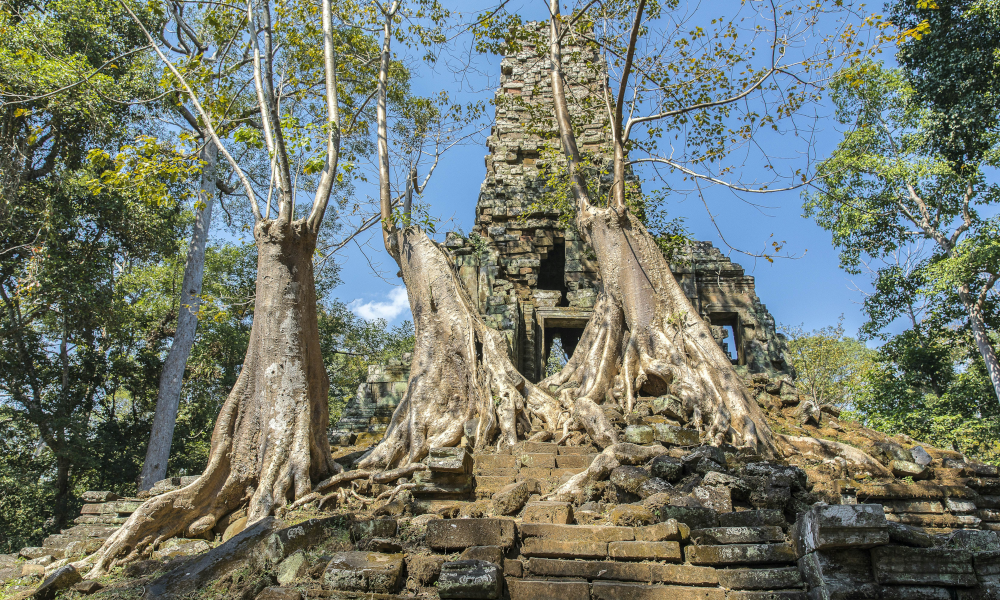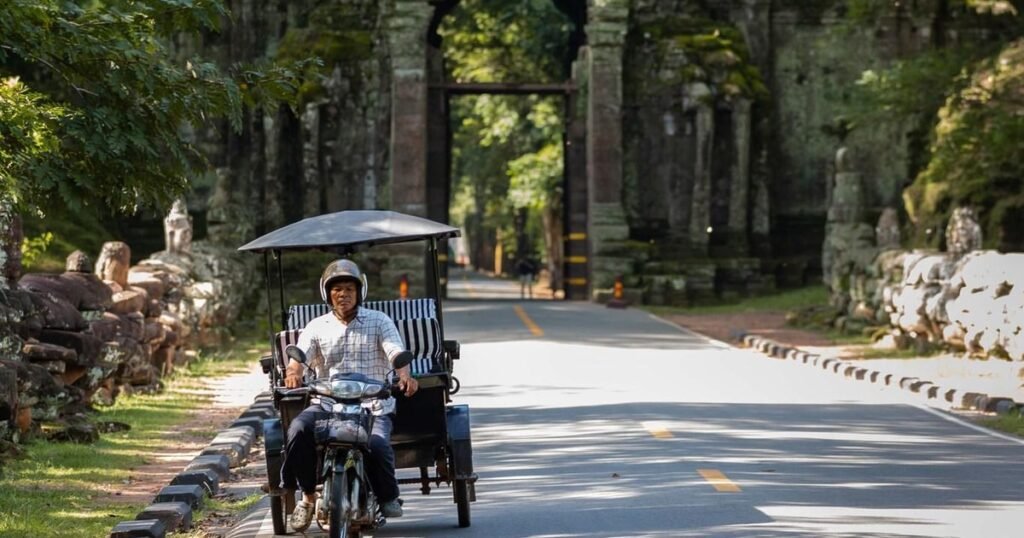Preah Palilay Temple

Preah Palilay is a modest edifice situated to the north of Phimeanakas within Angkor Thom. This structure incorporates features from both Hindu and Buddhist traditions. Due to the absence of inscriptions, the precise date of its construction remains uncertain.
Table of Contents
ToggleNestled within Angkor Thom, Preah Palilay frequently escapes the notice of numerous tourists. Nevertheless, its distinctive architecture, the dense jungle enveloping it, the seven-headed nagas, and the headless guardians contribute to a haunting atmosphere, making it an essential site to visit.
Experience a private Tuktuk tour of Angkor Wat and its neighboring temples. Discover the grandeur of Angkor Thom, Ta Keo, Banteay Kdei, and additional locations...
Layout and Design
The causeway that leads to the temple spans approximately 30 meters in length and approaches the sanctuary tower from the eastern direction. Flanking the causeway are nagas with seven heads, which hold a long, serpent-like figure that serves as balustrades. At the end of the terrace, there would have originally been two lion statues positioned as guardians of the temple; however, only one remains visible today.
The sanctuary tower is surrounded by a laterite wall measuring 50 meters on each side, with the entrance structure (gopura) located to the east. This gopura features a single tower that includes a large main entrance flanked by two smaller entrances. Within this area, visitors can observe a seated Buddha, a reclining Buddha, and various depictions of Buddhist narratives. These narratives include the subjugation of the elephant Nalagiri and a scene depicting the Buddha’s act of giving away his two children.
Additionally, the gopura showcases Hindu sculptures, including Indra mounted on Airavata, as well as representations of Varuna, the deity associated with the sky, water, and oceans.
The “Chimney”
One of the most remarkable aspects of Preah Palilay is the 6-meter tall tower resembling a chimney. Its unique design sets it apart from other constructions of the same era, making the temple a noteworthy destination. Visitors can access the tower from all four sides; however, the interior is cluttered with large stones, which complicates entry.
History of Preah Palilay
Preah Palilay is notable for the absence of a foundational stele or inscription, which complicates the determination of its construction date. The temple features a blend of Hindu and Buddhist motifs, leading to uncertainty regarding its exact period of establishment. Many historians attribute its construction to Jayavarman VIII.
However, it is important to note that during his reign, Jayavarman VIII transitioned from Buddhism back to Hinduism, making it improbable that he would have commissioned Buddhist carvings. This suggests that various sections of Preah Palilay may have been constructed at different times, with the tower potentially dating to the 12th century and the entrance gate (gopura) possibly erected in the 13th or 14th centuries.
Similar to numerous other temples in the vicinity, it is believed that Preah Palilay was abandoned at some point during the 16th century.
In terms of modern history, Preah Palilay was rediscovered by French explorers in the late 19th century. Following World War I, in 1918-1919, Henri Marchal undertook efforts to clean the site. Subsequently, just before World War II, in 1937-1938, Maurice Glaize restored the temple, utilizing as much of the original materials as feasible.
Should Visit or Not
The distinctive chimney-like tower serves as a compelling reason to dedicate some time to exploring the vicinity. Additionally, a small Buddhist monastery is located just behind the temple, where one may frequently observe monks enjoying moments of relaxation. The temple’s location, somewhat removed from the bustling crowds that frequent the more popular temples, offers a pleasant retreat.
Location & How to Get There
Preah Palilay is situated approximately 400 meters to the north of Phimeanakas and 350 meters to the west of Tep Pranam within the historic city of Angkor Thom. Although it is somewhat removed from the main thoroughfare leading to the north gate, the journey through the forest to reach it is certainly worthwhile.
To access Preah Palilay, one may proceed northward along a narrow path originating from Phimeanakas. Alternatively, visitors can continue north toward the North Gate of Angkor Thom and then turn west after passing both the Terrace of the Elephants and the Terrace of the Leper King. The entrance to the path is located directly across from Preah Pithu, near several small shops and restaurants. This area serves as a popular parking location for tour buses and tuk-tuks, and it is also a favored spot for lunch breaks.

